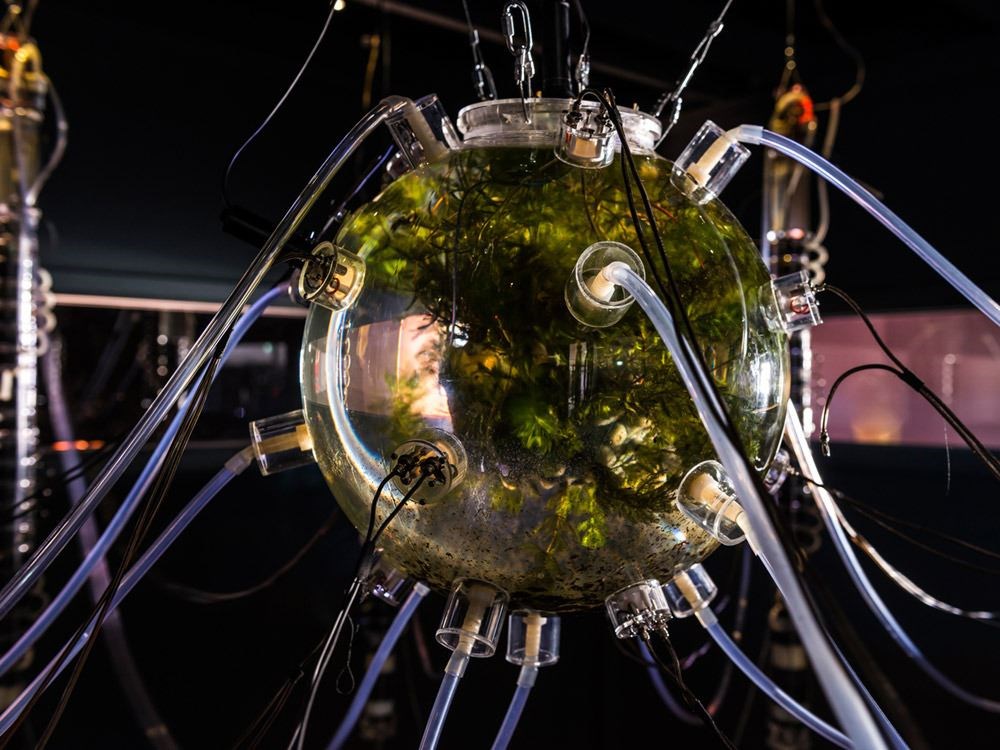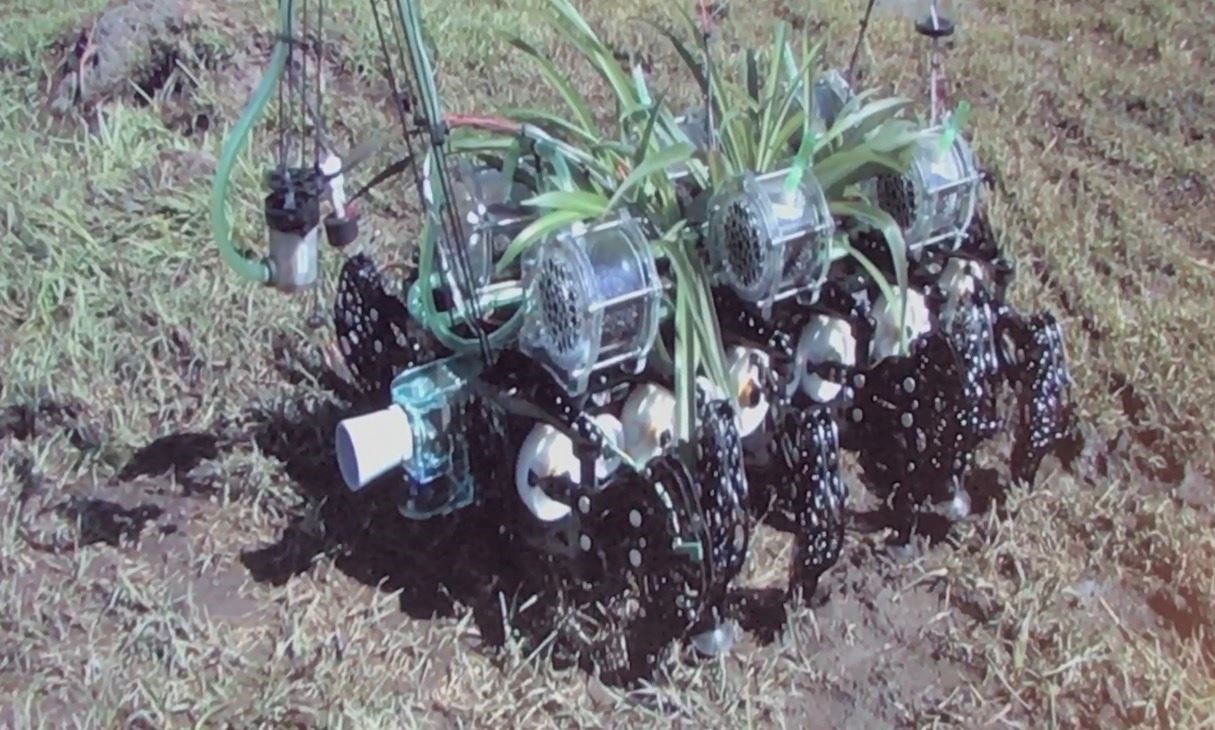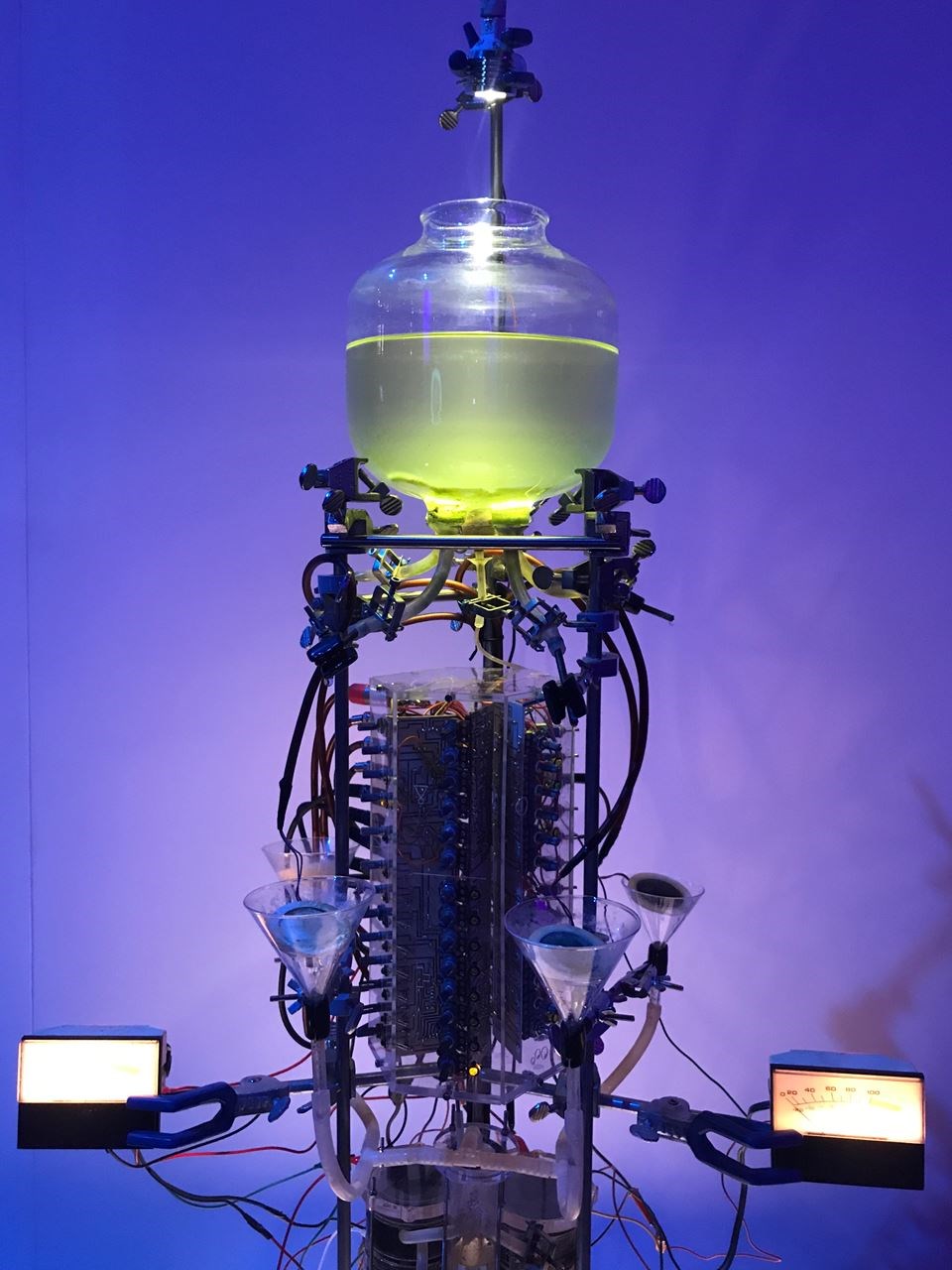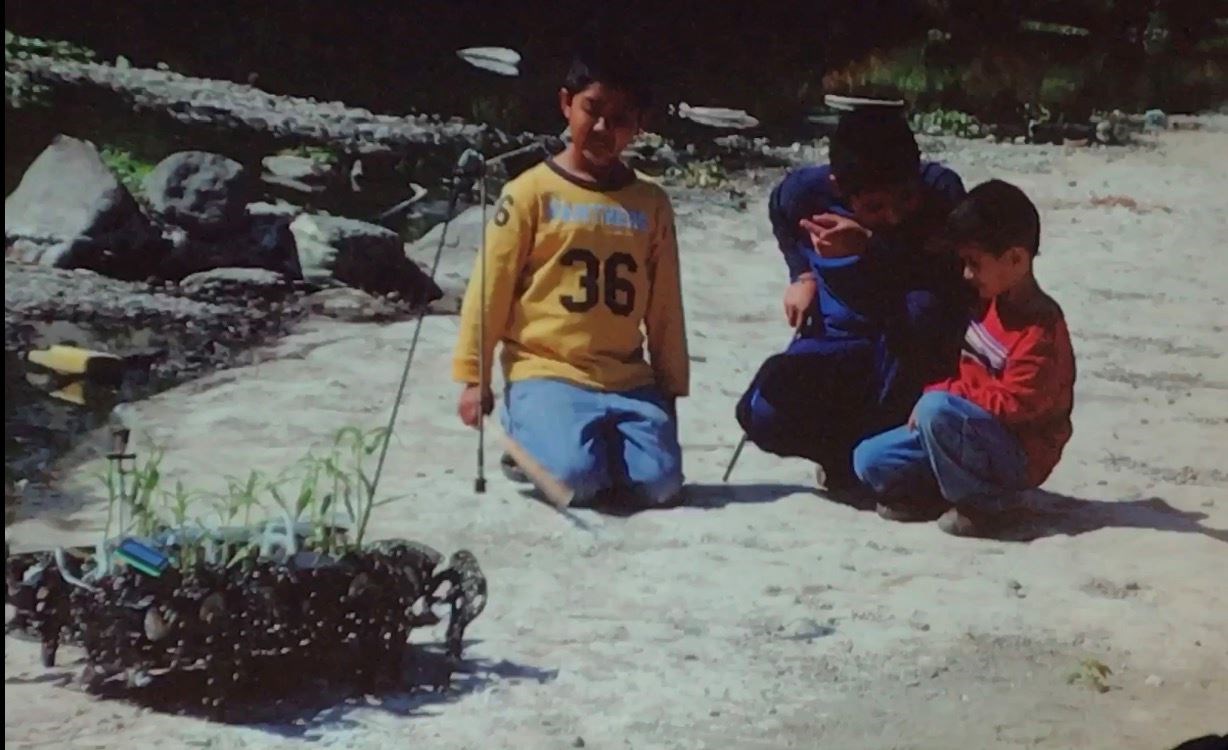 Research of microorganisms creating electric power.https://arttextum.net/portfolio/plantas-autofotosinteticas-de-gilberto-esparza/ Gilberto Esparza is an artist based in Mexico whose work examines and explores the capabilities of art and immersive technology to effect communities and their environments in beneficial ways. Focusing on the harmful, degenerative impacts of humans on their environment, he found through his art and research, on controlled environments, examples of how these problems might be resolved in our future. He explored the ability to counteract the damage that comes with inherited conceptions of progress, blind accumulation of wealth, and at the same time generate the energy we depend on. Gilberto has created a process of rejuvenating the landscapes and the ecology we depend on, enacting this with art and technology for these positive changes. His years of research spent experimenting with robotics and alternative, efficient means for generating power have resulted in the creation of works of artificial intelligence that generate electricity in non damaging ways but also works that restore neglected and polluted environments while they generate this power. He realized that the lifeforce of bacteria and microorganisms that thrive in contaminated waterways could be efficiently harnessed for creating power, at the same time clearing them from these environments, cleansing and rejuvenating them, benefiting the communities and societies in the areas around these natural resources. This project has taken several shapes and the overarching term he created for it is “Plantas Nomadas” or “Nomadic Plants.”
Research of microorganisms creating electric power.https://arttextum.net/portfolio/plantas-autofotosinteticas-de-gilberto-esparza/ Gilberto Esparza is an artist based in Mexico whose work examines and explores the capabilities of art and immersive technology to effect communities and their environments in beneficial ways. Focusing on the harmful, degenerative impacts of humans on their environment, he found through his art and research, on controlled environments, examples of how these problems might be resolved in our future. He explored the ability to counteract the damage that comes with inherited conceptions of progress, blind accumulation of wealth, and at the same time generate the energy we depend on. Gilberto has created a process of rejuvenating the landscapes and the ecology we depend on, enacting this with art and technology for these positive changes. His years of research spent experimenting with robotics and alternative, efficient means for generating power have resulted in the creation of works of artificial intelligence that generate electricity in non damaging ways but also works that restore neglected and polluted environments while they generate this power. He realized that the lifeforce of bacteria and microorganisms that thrive in contaminated waterways could be efficiently harnessed for creating power, at the same time clearing them from these environments, cleansing and rejuvenating them, benefiting the communities and societies in the areas around these natural resources. This project has taken several shapes and the overarching term he created for it is “Plantas Nomadas” or “Nomadic Plants.”
 "Plantas Nomadicas," Gilberto's self sustaining robot.Gilberto Esparanza lecture, SIGGRAPH 2017 Realizing the grave damage to these waterways, Gilberto created fuel cells powered by the biological energy of the bacterias that thrived in these polluted environments, locating his initial experiments on the Rio Santiago, Jalisco, Mexico, and the Rio Lima in Salamanca, Portugal, where he found high amounts bacterial activity. He researched and found the fuel cells he developed could power intricate and complex machines. He created robotics, powered by these bioactive organisms, that are able to move on their own, as they discover bacterially contaminated water and transfer the energy of these organisms, cleaning the water for their own survival, and at the same time growing healthy plants on their bodies. These robots are in fact amazing forms of artificial intelligence able to move on their own, fully sustain themselves, make basic decisions to maintain their survival, as they discovering and cleansing these contaminated waters as well as interacting with the communities around them. One of the greatest aspects of Plantas Nomadicas for him has been observing the social interactions with artificial intelligence -- how people perceive these structures as they move and thrive autonomously. The work has been tested on a small scale at these two rivers but provides an amazing example of how pollution can be harnessed to create energy efficiently and concurrently cleanse our damaged environments in our near future; art and technology exhibiting the possibilities for humans to live in symbiosis with nature, how artificial intelligence can be of great benefit to our social structures. While so many means of generating electricity and powering machines depletes our resources and pollutes the environment, Gilberto’s artwork successfully demonstrates that harm that has been done to our environment, as a result of 20th century conceptions of progress and wealth creation, these harms not only power our society, but these environment's own rejuvenation. Using these same methods, he displayed the power of these cells to generate power for other structures and electronic sculptures.
"Plantas Nomadicas," Gilberto's self sustaining robot.Gilberto Esparanza lecture, SIGGRAPH 2017 Realizing the grave damage to these waterways, Gilberto created fuel cells powered by the biological energy of the bacterias that thrived in these polluted environments, locating his initial experiments on the Rio Santiago, Jalisco, Mexico, and the Rio Lima in Salamanca, Portugal, where he found high amounts bacterial activity. He researched and found the fuel cells he developed could power intricate and complex machines. He created robotics, powered by these bioactive organisms, that are able to move on their own, as they discover bacterially contaminated water and transfer the energy of these organisms, cleaning the water for their own survival, and at the same time growing healthy plants on their bodies. These robots are in fact amazing forms of artificial intelligence able to move on their own, fully sustain themselves, make basic decisions to maintain their survival, as they discovering and cleansing these contaminated waters as well as interacting with the communities around them. One of the greatest aspects of Plantas Nomadicas for him has been observing the social interactions with artificial intelligence -- how people perceive these structures as they move and thrive autonomously. The work has been tested on a small scale at these two rivers but provides an amazing example of how pollution can be harnessed to create energy efficiently and concurrently cleanse our damaged environments in our near future; art and technology exhibiting the possibilities for humans to live in symbiosis with nature, how artificial intelligence can be of great benefit to our social structures. While so many means of generating electricity and powering machines depletes our resources and pollutes the environment, Gilberto’s artwork successfully demonstrates that harm that has been done to our environment, as a result of 20th century conceptions of progress and wealth creation, these harms not only power our society, but these environment's own rejuvenation. Using these same methods, he displayed the power of these cells to generate power for other structures and electronic sculptures.
 BioSoNot, bioactivated sculpture.Gilberto Esparanza; Art exhibition, SIGGRAPH 2017 BioSoNot 1.2, shown above, is piece Gilberto created that utilizes this bioactive fuel cell technology to create artwork -- as water is sent through the cells, the biological activity is turned to sound and light as this water is decontaminated. In this way the sculpture generates light and music from the harnessed ecology of the collected water. As he demonstrates the work in different locations he chooses local waterways to collect these polluted samples, as the piece was on view in Los Angeles at the 2017 SIGGRAPH convention for progressive, immersive technology, he collected water from the Los Angeles River, which has been a long overlooked waterway. The piece creates an “organic symphony” (Esparaza, http://www.plantasnomadas.com/) with its technology and speakers, merging art and available technology, pushing the energetic forces of bacteria to generate its own sounds and light, a seemingly random and chaotic experience actually guided by these simple lifeforms for humans to experience. The piece is placed in the dark, so the bacteria releases the energy needed to both create this music and the light that surrounds it in a subtle aesthetic manner.
BioSoNot, bioactivated sculpture.Gilberto Esparanza; Art exhibition, SIGGRAPH 2017 BioSoNot 1.2, shown above, is piece Gilberto created that utilizes this bioactive fuel cell technology to create artwork -- as water is sent through the cells, the biological activity is turned to sound and light as this water is decontaminated. In this way the sculpture generates light and music from the harnessed ecology of the collected water. As he demonstrates the work in different locations he chooses local waterways to collect these polluted samples, as the piece was on view in Los Angeles at the 2017 SIGGRAPH convention for progressive, immersive technology, he collected water from the Los Angeles River, which has been a long overlooked waterway. The piece creates an “organic symphony” (Esparaza, http://www.plantasnomadas.com/) with its technology and speakers, merging art and available technology, pushing the energetic forces of bacteria to generate its own sounds and light, a seemingly random and chaotic experience actually guided by these simple lifeforms for humans to experience. The piece is placed in the dark, so the bacteria releases the energy needed to both create this music and the light that surrounds it in a subtle aesthetic manner.
 Children interacting with the nomadic plant.Esparanza presentation, SIGGRAPH 2017 Gilberto’s work is an amazing example of how art, science and technology can be merged together in ways beneficial for humanity and our environment.
Children interacting with the nomadic plant.Esparanza presentation, SIGGRAPH 2017 Gilberto’s work is an amazing example of how art, science and technology can be merged together in ways beneficial for humanity and our environment.
Page created on 8/5/2017 1:01:02 AM
Last edited 9/14/2018 3:20:42 PM


Riley McMahon is a creative writer and journalist in Los Angeles. He can be contacted at [email protected]